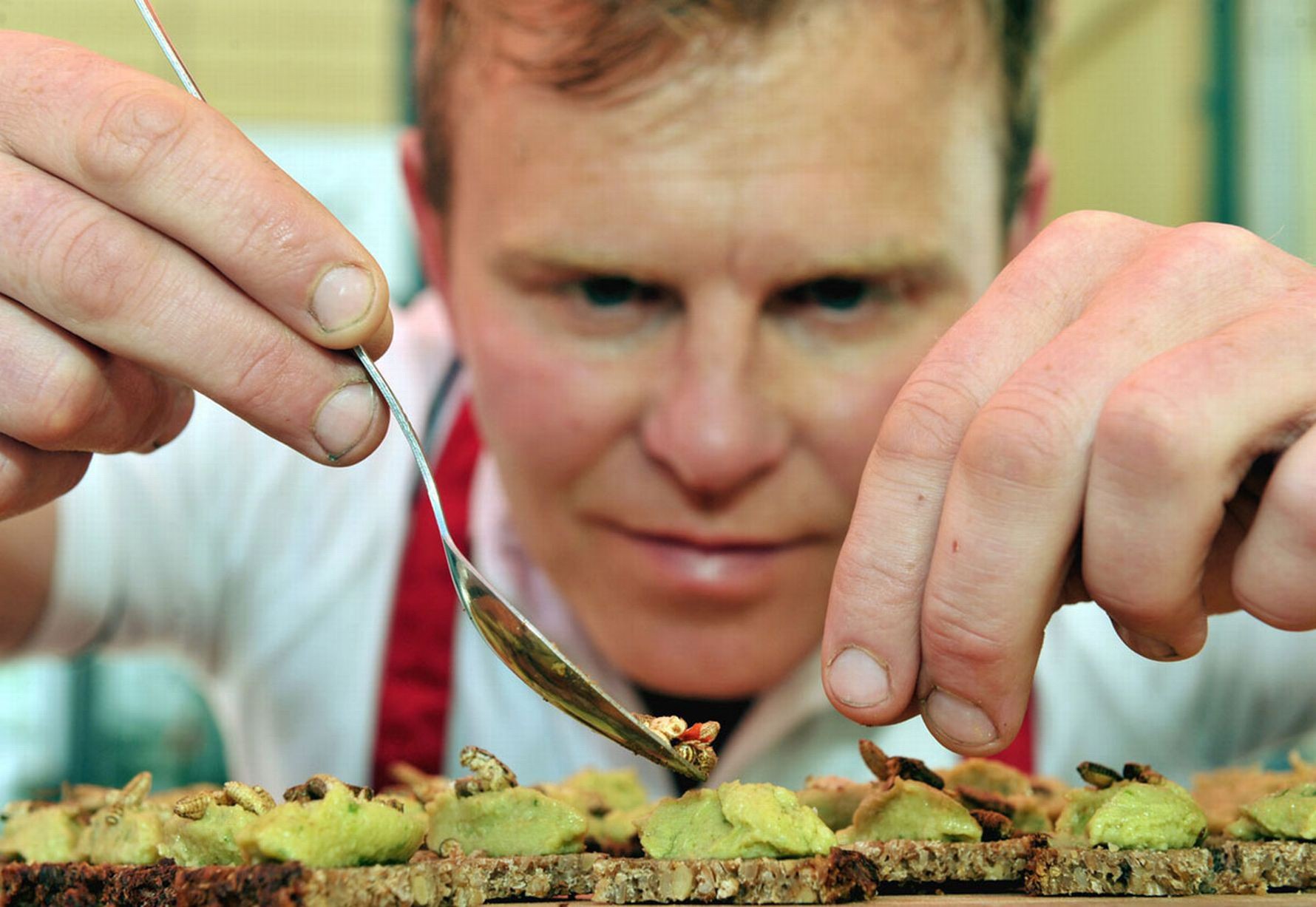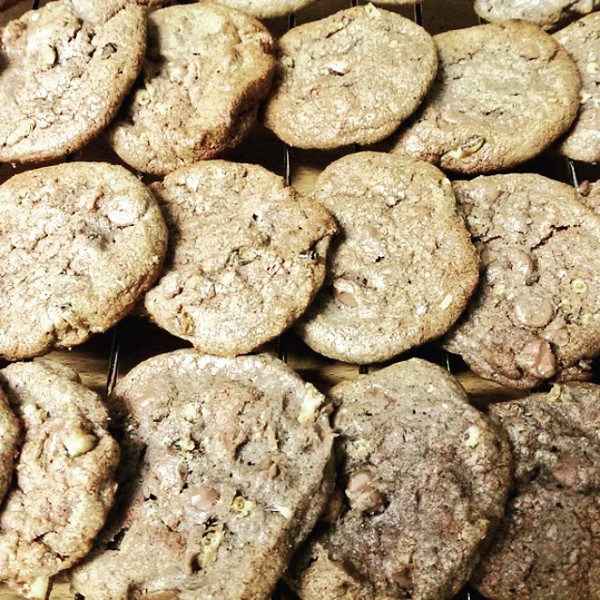

It’s Saturday night. Up for taking your date out for a huge meal of worms, crickets, and spiders? No? What if the menu looks less foreign than you expect, offering bug burgers with gourmet dips or cricket cookies with Nutella inside them?
Be adventurous; score some much-needed protein. Book a reservation at chef Andy Holcroft’s Grub Kitchen, Britain’s first full-time insect restaurant, when it opens in Pembrokeshire later this year.
As the world’s population increases, more mouths will go hungry. By 2050, we’ll be looking at more than nine billion people calling Earth home. With demand for animal products rising alongside the human population, scientists have long been looking into ways to produce cheap protein.
The idea for replacing proteins ingested from eating livestock like cow or lamb with that found in insects is not a new one. International conferences, such as “Insects to Feed the World,” have been discussing the benefits and pitfalls of chowing down on arachnids and arthropods for years. Meanwhile, fashionable neighborhoods around the world have taken to hosting insect eatery pop-ups. Sure, most were offered under the guise of true bucket-list experiential lore. (Think a Thai-inspired tasting menu with a few roasted insects on top, plenty of cocktails to obscure judgment, and some cultural badge of honor that allowed you to boast to your friends about eating bowls of crickets and worms for dinner.)
But Chef Holcroft’s Grub Kitchen is a little different. It’s taking theoretical discussions in the Netherlands and trendy international pop-ups and turning them into a practical, daily-open, sit-down restaurant for families, tourists, and locals alike. “There’s nowhere where you can have a sit down meal and have insects as a starter, main, and puddings as well,” explained the chef, who has worked in Michelin-starred kitchens in the past. “We’re not just sprinkling a few insects on salads and saying now we’re pioneers of cooking with insects in the U.K.–we’re actually trying to use them in whole dishes and dishes that people will recognize.”

Holcroft is quick to point out that his restaurant won’t alienate diners with a menu of unfamiliar dishes, either–they can expect a fusion of insects with local ingredients for each carefully prepared dish. For example, the restaurant’s signature “Bug Burger” will offer a patty with grasshoppers, crickets, and mealworms in it but “served with polenta chips and various dips such as tzatziki, aioli, or laverbread crème fraiche.”
Cricket Cookies, made from whole crickets, dried, roasted, and then milled into a fine powder, will have creamy Nutella and peanut butter inside them to attract the kids. A Sago Worm Pad Thai Curry will be the classic Thai dish with a twist–inch-long buttery bugs from Borneo, which are full of the Omega 3 oils normally found in fish.

Helping cultivate some of the bug ingredients for these dishes is entomologist Dr. Sarah Beynon, whose passion for all things insect spurred her to buy her uncle’s 100-acre farm in December 2013, the land on which the Grub Kitchen and neighboring Bug Farm both exist today. The Bug Farm is set to open alongside the restaurant, offering talks and attractions for anyone interested in learning more about bug cuisine. With all of those insects on the menu, it will also provide an organic growing range of ingredients for Chef Holcroft’s fare.
With the Bug Farm as a nearby tourist attraction, getting people to visit Grub Kitchen may not be difficult, but Holcroft will still have to ease doubts about eating insects. Not to mention, there’s also whole other areas of uncertainty associated with cooking them for the day-to-day, rather than for a one-off event. For example, will people with shellfish allergies also react to an insect like a beetle? What about people with dust-mite reactions?
Holcroft is ironing out these issues as he continues on his aphid adventure, and he’s already passed his first big test–cooking for the local Women’s Institute. “They came for afternoon tea, and as well as making lemon drizzle cake and scones, I served them some insect samples and Cricket Cookies–they absolutely loved them!” said the chef.
With Grub Kitchen planning its debut for later next year, its success or failure will be a good indicator of the dining elite’s willingness to expand its palate. The thing is, in the future, we may not have much of a choice.


How We Get To Next was a magazine that explored the future of science, technology, and culture from 2014 to 2019. This article is part of our The Future of Food section, which covers new innovations changing everything from farming to cooking. Click the logo to read more.
